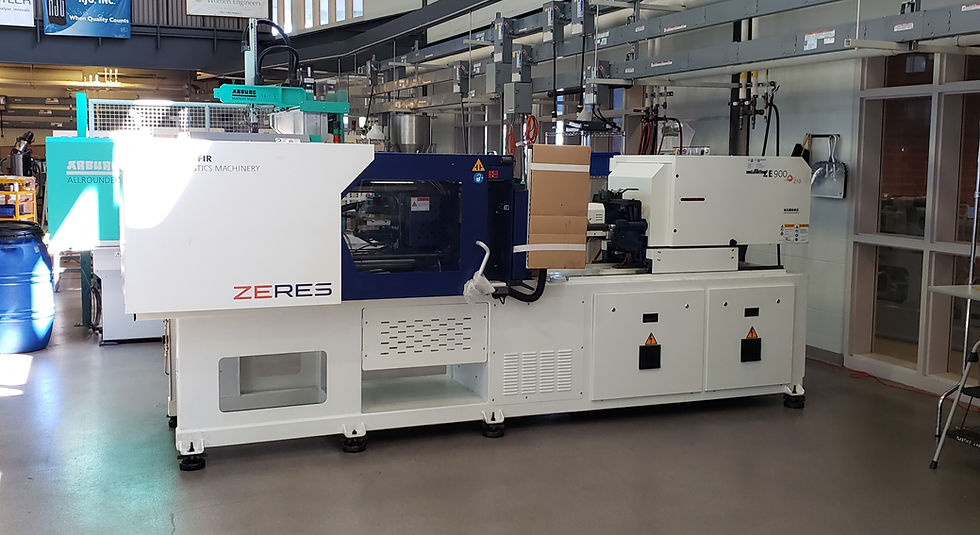The 4 different types of injection molding machines
- AHC
- Mar 5, 2020
- 2 min read
Updated: Mar 3, 2021

As servomotor hydraulic, hybrid and all-electric molding machinery become more widely adopted, what distinguishes each type of machine can get a little fuzzy. On both ends of the spectrum, conventional hydraulic and all-electric machines seem clear to most. But the machines in between – servo hydraulic and hybrid machines – causes some confusion. In this post, we’ll breakdown the differences and how they impact manufacturing process.
1. Conventional Hydraulic
Conventional hydraulic machines use a standard induction motor together with a conventional hydraulic pump / circuit configuration. This means the motor always spins at the same RPM (revolutions per minute). These machines can be equipped with a variety of hydraulic circuit designs, depending on the design specification. However, they are generally the least energy efficient because the motor always spins at the same speed and oil is always moving through the hydraulic circuit even when there is not work to be done. It’s also the least capable of providing precision process control, unless equipped with sensitive (and typically expensive) servo hydraulic valves.
2. Servomotor Hydraulic
Instead of an induction motor, servomotor hydraulic machines use servomotors coupled with a hydraulic gear pump. This means that the motor only spins when you need something to deliver oil to a hydraulic cylinder or hydraulic motor in order to perform one of the machine movements. The motor also only spins at the speed necessary to achieve the setpoint movement speeds. For this type of machine, such as the Haitian Mars series, all of the machine’s motion remains driven by hydraulic fluid. Relative to conventional hydraulic machines, servomotor hydraulic machines are more energy efficient since the motor only runs when needed and oil is only moving through the hydraulic circuit when there is work to be done.

3. Hybrid Machine
As the name suggests, hybrid machines are a mixture of hydraulic and electric technologies. This means that some machine motions remain driven by hydraulic fluid, while others are picked up by electric motors. Hybrid machines include a wide range of configurations. Even if a single motion is driven by electric / mechanical drive components (such as a hydraulic toggle machine equipped with an electric screw drive) it is considered a hybrid. This type of hybrid is predominantly a hydraulic machine, a similar example would be the Zhafir Jenius series.

On the other end of the spectrum would be a machine that is predominantly electric. The Haitian Zhafir Zeres series, for example, is equipped with electric inject, screw rotate, clamp, and die height movements, but has hydraulic cores, ejectors and carriage movement.

Depending on the configuration, a hybrid may provide processing capabilities representative of a fully hydraulic or fully electric machine.
4. All-Electric Machine
In all-electric machines, all motion is driven by electric motors together with mechanical transmission components such as belts, ball screws, gears, etc. These machines, such as the Zhafir Venus series, are generally the most energy efficient, have the most precise process control, and are the cleanest and quietest on the shop floor.


Each of these four types of machinery is defined by what drives the motions. When considering the options (particularly servomotor hydraulic or hybrid), we encourage customers to take the time to understand the implications the differences have on manufacturing.
Have any questions? Our team is always happy to help; reach out via email or direct at 508-459-5372.





Comments